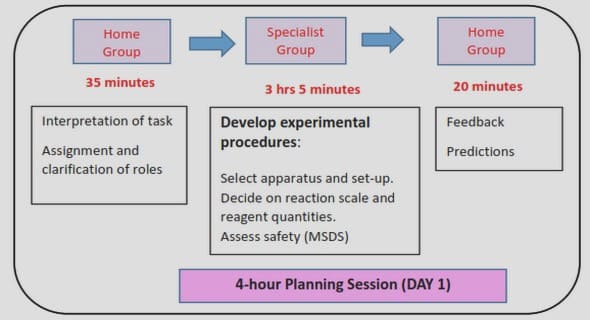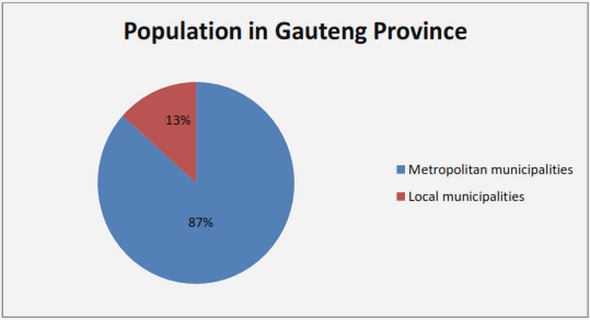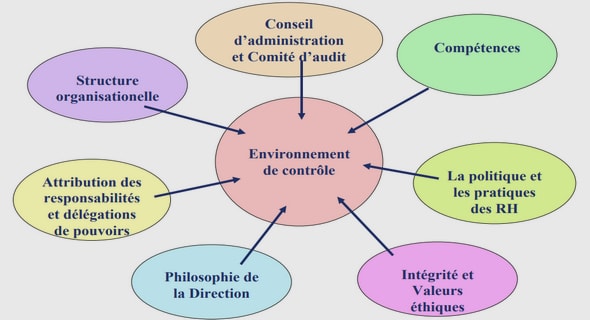Get Complete Project Material File(s) Now! »
Method, Data and Variables
General Method
The methodology mostly builds on already established financial instruments. These instruments will work as the foundation of our research in order to detect the relationship between total compensation and company performance.
The choice of method is characterized by the deductive approach because these financial instruments work as the theories and tools to support or reject the hypothesis we have created. The research will start with a theory that there is a positive relation between total compensation received by the CEO and the financial performance of the company. This theory will be tested when using the financial instruments as already existing theories to test the hypotheses. The inductive approach is also an alternative way of conducting the research, if we are creating a theory after analyzing the results from the study (socialresearchmethods 2006). However, the deductive approach is the one that will characterize our investigation.
Data Collection
In order to be able to analyze and find a relation, there are several important variables that need to be retrieved so that the financial instruments will become applicable. These important numbers and variables will be gathered from respective company’s annual report, which in turn can be retrieved from the corporations’ web pages. In order to be able to analyze and find support for the relation, annual reports ranging from the consecutive years 2003 to 2008 have been gathered for each of the companies. The numbers have also been gathered from Svenska Handelsbanken’s database, which also has based their information from annual reports.
From the annual reports and the database, key variables and numbers have been assembled and compiled in an excel document so the different financial ratios could be calculated. Then the data was assembled to a pooled panel data, which also was adjusted for some extreme values.
When choosing the total compensation, we have decided to exclude options on deposit and paid out to the CEO. We also chose to exclude termination wage since Bäckström (2006) argues that it is the compensation paid out during the active career that is the important incentive for CEOs. An exclusion has also been made with social fees since it is not compensation to the CEO. It is a fee to the state which is in line with a study made by Bebchuk and Grinstein (2005) that also excluded social fees. We also chose to exclude extra benefits as car benefits etc. In figure 2 one can see how we have composed the total compensation. However, the numbers have not been adjusted for inflation.
The data set consists of a panel of 428 to 448 observations. Dougherty (2002) argues that research made with the use of time series implies that one variable is tested several times within the same time interval. According to Dougherty, Panel data is a mix of cross-sectional and time series data. In our study we will be using panel data since we will test the total compensation to the CEO to several variables during the years 2003-2008, which therefore becomes multidimensional.
The study is done with a quantitative method of research since we have mainly gathered our information data from annual reports and databases. The gathered data comes from annual reports and are secondary data, which is compensation to the CEO, assets and earnings before interest, equity and market value. From Handelsbanken’s database, debt, cash flow and revenues have been retrieved.
Most of the companies’ annual reports where the gathered information havs been taken from have declared their numbers in Swedish Krona. However, some of the chosen companies declare their information in other currencies, which are EURO, NOK, USD, and CHF. We will use the average exchange rate each year from Riksbanken, which we have obtained from Riksbanken’s website and converted all numbers to SEK. We have chosen to declare in SEK since it is the Swedish currency, and this is a Swedish study and most of the gathered information is already in SEK.
In Table 2 it is declared which average exchange rate is used for each year.
Tobin’s Q
James Tobin developed a ratio called Tobin’s q Ratio, which purpose is to compare the total market value of a company with its total asset value.
The ratio shows if a firms stock is more expensive than the replacement cost of its assets. The use of including debt is because companies can have big debts and therefore it can affect a company in a severe way without being seen in Tobin’s q. If q is between 0-1 the stock is undervalued. When q is greater than 1 the stock is overvalued. Tobin’s q plays an important role in many different financial interactions. The ratio is used to help explain several different phenomena regarding investment decisions (H. Chung and W.Pruitt 1994).
The more attractive the CEO makes the company, the more attractive the stock will become. According to Bond et al. (2004) Tobin’s q encapsulates all the important information regarding expected profitability of investment. L. Lang et al (1996) concludes that there is a negative relation between leverage and growth for corporations with a low Tobin’s q, but this relation does not hold for firms with high Tobin’s q. This means accordingly to the author last mentioned that the leverage does not have a negative impact in companies with good investment opportunities. However, it has a negative relation for firms with a large debt in their financial account.
Furthermore, Bond et al. (2004) argue in their article that by looking at Tobin’s q one can see a strong evidence for investment opportunities in companies. However the authors also discuss the weakness of Tobin’s q when there is a financial bubble.
They argue that there is a need for more financial ratios and information to rely on when analyzing the data.
Tobin’s q
Return on Assets
This ratio is important because it paints a clear picture of what a company can do with available resources.
The ratio can be calculated with the following equation; net income divided by average total assets. This is the chosen way to calculate because total average assets is covering more of the whole year than just using total assets in the final annual report.
In a study conducted by Bebchuk and Grinstein, (2005) they used ROA and past return to control for CEO performance. This is very helpful in order to fulfill our purpose because well-known economists have used this ratio for similar purposes in the past. This ratio will very clearly help to detect whether or not the performance made by the chief executive officer has been of importance to the company’s financial situation and progress. Furthermore, Bebchuk and Grinstein (2005) argue that there is a correlation between total compensation to the CEO and increases in the company’s turnover, return on assets and return on stocks. However, Mäkinen (2007) discusses the correlation between compensation and return on stocks but not the relation with return on assets.
Return on Assets (ROA)
Return on Equity
Return on Equity is an often used measure on how well a company performs. This ratio tells how well a company uses invested capital to generate earnings growth. It measures the rate of return on the shareholder’s equity of the common stock owners. This is important because the financial improvement of the firm is directly related to how well it is being managed by the chief executive officer. Therefore it makes a strong case to include in our research in order to fulfill the purpose. Lambert and Larcker (1987) argue that return on equity measures performance in bonus contracts, which implies that a good return on equity has a positive relation to bonus contracts, hence vice versa. The authors also argue that changes in return on equity are statistically related to cash compensation. However, in a research made by Chakravarthy (1986) of American firms the author did not find a significant relation between firms performing excellent and non-excellent when measuring return on equity. However, this research has been criticized by McGuire and Schneeweis (1983) “They have (1) scope for accounting manipulation; (2) undervaluation of assets; (3) distortions due to depreciation policies, inventory valuation and treatment of certain revenue and expenditure items; (4) differences in methods of consolidating accounts; and (5) differences due to lack of standardization in international accounting conventions.” Thus, this is evidence that supports the need of more sources to evaluate financial performance.
I E. Brick et al. (2005) state in their article the hypothesis that what they call excessive compensation to the CEO is linked to poor performance of the firm. Thus, their hypothesis is the opposite of our hypothesis. We expect to see a correlation between how well compensated the CEO is and how well the company is performing. In the article, they expect to see a negative relation between firm performance and excessive compensation to the CEO, where the board of directors is also well compensated and there is an ongoing cronyism. Their findings also supported their hypothesis, which means that over compensation led to under performance.
In order to measure the financial performance we need to understand the variances of different ratios since there could be significant differences in prices of stocks. In the article: Explaining the Variance of Price-Dividend Ratios by John. H. Cochcrane (1992), the author is doing two volatility tests in order to answer the question: are prices to volatile? When we are developing our regression models we need to figure out whether it is plausible to use price per share or if it is too volatile to use. Since CEO total compensation is rather smooth it can be a problem by using a volatile number, which stock prices actually are, when we explore the financial situation through the eyes of any investor. However, for an investor the price is still of high importance.
Return on Equity (ROE)
Cash Flow
Jensen (1986) argues that there is a big issue when companies have substantial strong free cash flow. Managers and shareholders obtain different interest in payout policies. The author then argues that debt can many times replace paid out dividends and also how debt can reduce agency costs of free cash flow. Therefore a measure with Tobin’s q including debt is important but also to make a measure in cash flow when the analysis is developed. However, Dechow (1994) argues that cash flows are a more primitive form of measuring performance than earnings. Kaplan and Zingales (1997) found in their research that the least constrained companies and the ones that performed best financially were companies that primarily relied on internal cash flow.
Cash Flow – measure
Sales and Compensation
According to McGuire et al. (1962) Kostiuk (1990) compensation to the executives increases with firm size. This relation is relatively constant and has been stable over the years (Kostiuk 1990). Sales is also a measurement of size and performance of a company, thus we have chosen to include this variable in our analysis of the data.
Sales growth
When deciding on what different variables to include in the different formulas in order to retrieve the most suited result, we have used different sources of information. Allen, Myers and Brealey (2008) presented several formulas, which we have used in consultancy with Peter Karlsson and Janne Köll at Handelsbanken capital markets. We have also consulted with our tutor Johan Eklund on Tobin’s q.
Reliability, Replication and Validity
It is important that the same result will show up even if this study was made another time. Bryman and Bell (2005) argue that the three most vital criteria for doing research are reliability, replication and validity. Reliability measures how trustworthy the result of this study is. This study has a high reliability since the information is gathered from annual reports. Since these annual reports have been published and reviewed by external people, one can see them as trustworthy sources. Handelsbanken’s database is also a reliable source since the information is gathered from annual reports from the chosen companies and is used by one of the biggest companies in Sweden with a commercial purpose.
Replication is how easy it is to remake this research (Bryman and Bell, 2005). Since our information is gathered mainly from publicly accessible sources, we find it possible to replicate our study without issues. However, even though all information is not gathered from only publicly available sources the same numbers can be found at public sources. In addition, how we have conducted the reserach is well described, the regressions is detaily described and all the needed information is included in the appendixes.
There are different criteria for validity when it comes to conducting research. According to Bryman and Bell (2005), the most important criteria to have in mind when conducting a quantitative research is that the measure reflects what is going to be measured. Because the total compensation received by the CEO reflects on the firm’s financial performance we believe that total compensation measures what we want to investigate.
Criticism of the Sources
We consider our sources as reliable since the information is gathered from annual reports that have been reviewed by external people and is also regimented by IAS/IFRS and Svensk kod för bolagsstyrning. Handelsbanken’s database is secondary sources since they have gathered information from the annual reports and published them.
However, manipulation, errors and mistakes can occur in the annual reports and lead to errors in our calculations. Yet since we gathered a quite big amount of data this will probably not have a large impact on our calculations. The gathered information regarding the exchange rate is from Riksbanken and is therefore a trustworthy source, but mistakes can occur even there.
Due to the fact that we have used a lot of different sources with a variety of perspectives, we believe that we have reached a strong objectivity. Most of the sources have been referred and cited by many other authors and researchers. This increases the reliability of this study. The use of theories is well known and well used and is still used by a variety of researchers.
Criticism of the Methodology
There are reasons to believe that the results would differ if we included industry codes and used dummy variables to be able to analyze these industries. However, there are too few companies in our data set in order to include industry codes and therefore it is not measurably sufficient.
Thus, we suggest if one will do a similar analysis, to make a larger data set so it is possible to have several companies in every industry. However, it will be quite hard if one will only use listed companies in a certain size on the Swedish market.
Fall Offs
The data has been gathered from annual reports, Handelsbanken’s database. There has been some data that has not been available. It has happened when the companies do not declare separately between the board fees and the chief executive salaries. Some companies did not have all the annual reports needed available for the older years and the data has therefore a few partial fall offs. However, since the research has been made with a relatively big data set, which includes many years and several companies, this will not severely affect the analysis and conclusion.
Table of Contents
1 Introduction and Research Problems
1.1 Background
1.2 Problem Discussion
1.3 Purpose
1.4 Scope and Delimitations
2 Theoretical Framework
2.1 Corporate Governance
2.2 The Principal Agent Theory
3 Method, Data and Variables
3.1 General Method
3.2 Data Collection
3.3 Tobin’s Q
3.4 Return on Assets
3.5 Return on Equity
3.6 Cash Flow
3.7 Sales and Compensation
3.8 Reliability, Replication and Validity
3.9 Criticism of the Sources
3.10 Criticism of the Methodology
3.11 Fall Offs
3.12 Hypotheses
4 Empirics, Results and Analysis
4.1 The CEO Compensation
4.2 Analysis
4.3 Further Analysis
5 Conclusion
6 Discussion
6.1 Suggestions for further studies
7 References
GET THE COMPLETE PROJECT
Executive Compensation and Firm Performance in Sweden


